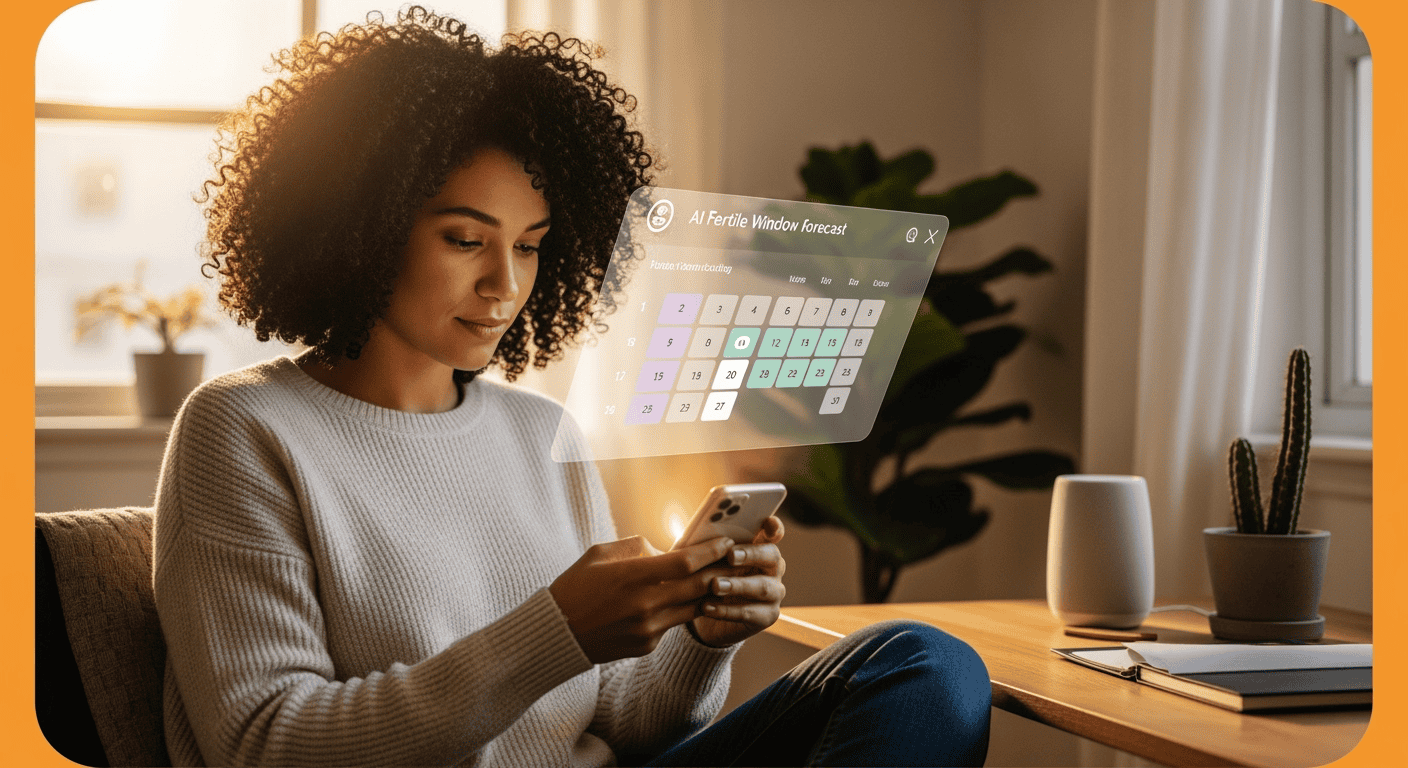AI Is Revolutionizing Fertility—And It’s More Personal Than You Think
For decades, fertility tracking was based on one-size-fits-all formulas. Count 14 days from the start of your cycle, mark ovulation, and hope for the best. But real life—and real bodies—are far more complex. If you're a career-driven woman juggling deadlines and cycle fluctuations, you already know that timing conception is anything but straightforward.
That's where AI comes in.
Modern fertility platforms like ProMom™ use machine learning, biometric signals, and behavioral insights to forecast your most fertile window—not based on averages, but on you. It's personalized, predictive, and surprisingly empowering.
Let’s explore how it works, why it matters, and what the future of fertility really looks like.
What Does “Fertile Window” Actually Mean?
Before we dive into artificial intelligence, let’s clarify the biology.
The fertile window is the short time during your cycle when conception is most likely—about five days before ovulation and the day of ovulation itself. That’s because sperm can live inside the female body for up to 5 days, but an egg survives only 12–24 hours after ovulation.
So, catching that window is everything.
Unfortunately, traditional tracking methods—calendar counting or even LH strips—aren’t always accurate. Your cycle might be irregular due to stress, travel, illness, or postpartum changes. And if you’re relying solely on average patterns, you could be missing your actual peak fertility.
How AI Predicts Fertility More Accurately
Fertility prediction powered by AI is all about pattern recognition and personalization.
Here’s what tools like ProMom™ analyze behind the scenes:
• Cycle Length Variability – AI doesn’t assume your cycle is always 28 days. It learns from your past cycles, even if they’re irregular, and adjusts predictions in real-time.
• Basal Body Temperature (BBT) – BBT rises slightly after ovulation. AI models analyze your daily temps to pinpoint when that rise consistently occurs, even spotting trends before they’re obvious to you.
• Cervical Mucus Changes – Fertile cervical mucus (clear, stretchy) is a strong ovulation signal. When users log this, AI correlates those entries with other markers to strengthen prediction accuracy.
• Behavioral Signals – Mood changes, energy levels, sleep patterns, cravings—all of these shift with your hormonal phases. AI can pick up on those subtle changes to refine forecasts.
• Feedback Loops – The more you log, the smarter it gets. AI continually learns from your data—no two women will receive the same cycle advice.
Fun Fact: Early studies show AI predictions are 30–60% more accurate than standard ovulation calculators for women with irregular cycles.
Why This Matters for Working Women
Planning to conceive while managing a career comes with its own set of challenges:
• You can’t always “drop everything” when you think you might be ovulating.
• Stress can delay ovulation—making precise timing even harder.
• Travel, remote work, and demanding schedules complicate cycle tracking.
AI-powered apps like ProMom™ let you plan ahead with confidence. Instead of scrambling to optimize last-minute timing, you can receive a forecast a week in advance that says:
“Based on your current patterns, your highest fertility days will likely be Thursday through Saturday.”
That allows you to plan intimacy, rest, and nutrition accordingly—without added anxiety.
The Science (and Safety) Behind AI in Health
AI in fertility isn’t just a buzzword—it’s a system built on evidence. Here’s how it meets modern health standards:
• Data privacy – Apps like ProMom™ are HIPAA-compliant and never sell user data.
• Medical grounding – Predictions are modeled on real biological signals—not generalized averages or unverified tips.
• No gimmicks – Unlike many influencer-driven fertility fads, AI is rooted in reproducible, peer-reviewed models.
And most importantly, it’s designed to support—not replace—medical care. Many women use AI tools to decide when to consult a specialist, start hormone testing, or begin fertility treatment.
What AI Can’t Do—And Why That’s Okay
It’s important to stay grounded in what AI is not:
• It’s not a fertility doctor.
• It won’t diagnose underlying conditions like PCOS or endometriosis.
• It’s not a guaranteed way to conceive.
What it is, is a powerful tool for clarity, consistency, and control. In a world of uncertainty, that can make a profound difference—especially for women balancing work, life, and the emotional complexity of trying to conceive.
What’s Next? The Future of AI Fertility Support
The field is evolving fast. Here's what we're seeing on the horizon:
• 📱 Integration with wearables (e.g., Oura ring, Apple Watch, Ava band)
• 🔬 Hormone level syncing via home testing kits
• 🧬 PCOS-specific algorithms for irregular cycle prediction
• 🔁 Cycle syncing with lifestyle coaching: diet, stress reduction, supplements
And perhaps most exciting: AI that adapts to your priorities. Whether you're actively TTC (trying to conceive), planning for later, or just curious about your reproductive health—the experience adapts to your journey.
Conclusion: From Guesswork to Confidence
AI fertility tracking isn’t about replacing your instincts or your OB/GYN—it’s about enhancing your awareness and options.
It’s the difference between wondering and knowing. Between guessing and planning. Between stressing and thriving.
In a world where you’re managing a million responsibilities, ProMom™ is here to bring peace of mind to one of the most personal parts of your life.
Whether you’re on your first cycle or your fifteenth, AI is here to support you—with insight, empathy, and precision.


.svg)


.svg)
.svg)
.svg)